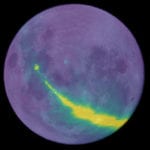 Technology
Technology  Technology
Technology  Humans
Humans 10 Everyday Human Behaviors That Are Actually Survival Instincts
 Animals
Animals 10 Animals That Humiliated and Harmed Historical Leaders
 History
History 10 Most Influential Protests in Modern History
 Creepy
Creepy 10 More Representations of Death from Myth, Legend, and Folktale
 Technology
Technology 10 Scientific Breakthroughs of 2025 That’ll Change Everything
 Our World
Our World 10 Ways Icelandic Culture Makes Other Countries Look Boring
 Misconceptions
Misconceptions 10 Common Misconceptions About the Victorian Era
 Mysteries
Mysteries 10 Strange Unexplained Mysteries of 2025
 Miscellaneous
Miscellaneous 10 of History’s Most Bell-Ringing Finishing Moves
 Technology
Technology Top 10 Everyday Tech Buzzwords That Hide a Darker Past
 Humans
Humans 10 Everyday Human Behaviors That Are Actually Survival Instincts
 Animals
Animals 10 Animals That Humiliated and Harmed Historical Leaders
Who's Behind Listverse?

Jamie Frater
Head Editor
Jamie founded Listverse due to an insatiable desire to share fascinating, obscure, and bizarre facts. He has been a guest speaker on numerous national radio and television stations and is a five time published author.
More About Us History
History 10 Most Influential Protests in Modern History
 Creepy
Creepy 10 More Representations of Death from Myth, Legend, and Folktale
 Technology
Technology 10 Scientific Breakthroughs of 2025 That’ll Change Everything
 Our World
Our World 10 Ways Icelandic Culture Makes Other Countries Look Boring
 Misconceptions
Misconceptions 10 Common Misconceptions About the Victorian Era
 Mysteries
Mysteries 10 Strange Unexplained Mysteries of 2025
 Miscellaneous
Miscellaneous 10 of History’s Most Bell-Ringing Finishing Moves
10 Moons Humans Could Colonize
When we talk about human colonies being established in space, many of us probably think of Mars, and with good reason. We’ve been fascinated with the red planet for thousands of years, and both NASA and several private companies are making serious attempts to colonize it within decades.
However, there are several moons throughout the solar system that are seemingly well-suited for us to set up colonies, and with signs of liquid water being present on some of them, we may find life is already there, albeit in microbe form. Whether they could host a small permanent base to launch further missions or a full-fledged colonized society, here are ten moons that human beings may very well call home in the future.
10 Europa
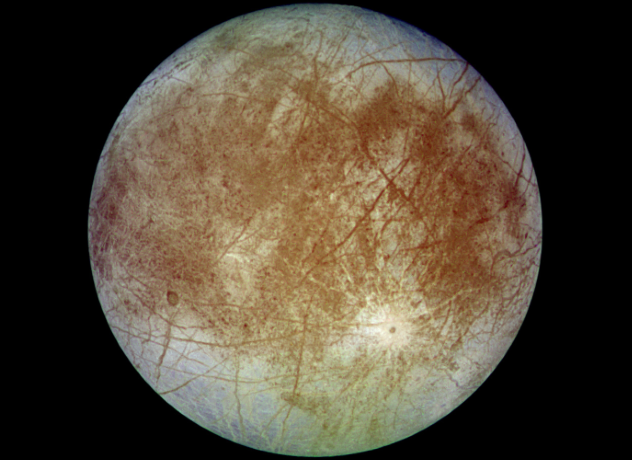
Not only is there a good chance that humans would be able to live on Europa, but it’s also possible that life may already exist there. One of Jupiter’s many moons, Europa has a thick icy crust, but a vast ocean is believed to be underneath it. It also has a rocky inner core, which could help to produce the correct environment to support alien life, be it simple microbes or more advanced living creatures.
Studies of the expected ocean and how it cycles oxygen and hydrogen will be a good indicator for the real chances of life on Europa as well as how real the possibility of humans being able to colonize it actually are. NASA hopes to determine whether the water reacts with the rocky core of the moon and then see if this reaction creates both heat and hydrogen, as the process does here on Earth. The study of oxidants in the icy crust will be an indicator of the amount of oxygen produced and how much of it is “pushed” into the ocean below.
It is thought that NASA will have studied Europa much more closely by 2025, which will be the only way to determine if their theories can work in reality. Closer study may also uncover the presence of active volcanoes under the icy surface, which would increase the chances of life on the moon. Such volcanoes would send water laced with vital minerals into the ocean.
When NASA does manage to get a closer look at Europa, they will carry out a variety of research to help give them a better idea of what lies beneath the thick layer of ice on its surface. Magnetic sounding should provide scientists with readings that will give them an indicator of how thick the ice is while also providing information on the depth of the ocean itself. Even the “saltiness” of the water should be determined from this operation. They will also use radar technology to penetrate the thick surface ice, which should ultimately disclose any structures that may lie beneath.
9 Titan
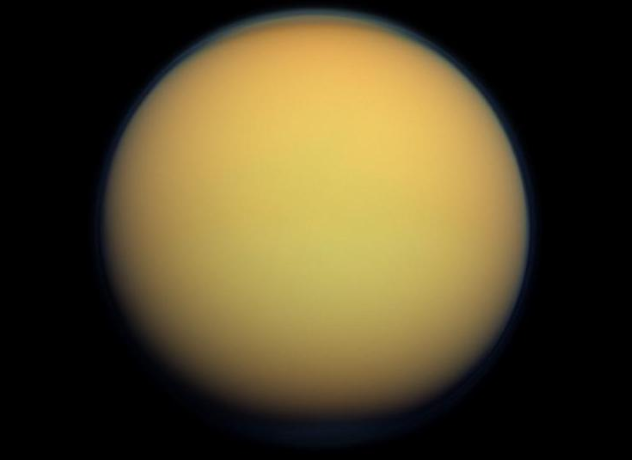
Although it’s in the outer solar system, Saturn’s moon Titan is probably one of the more favorable places for humans and one that many people believe we should be looking to colonize in the future.
Humans would still require breathing apparatuses, as the atmosphere is unbreathable to us, but there would be no need to wear pressurized space suits. There would, however, be a need to wear protective clothing due to the severely cold temperatures, which average –179 degrees Celsius (–290 degrees °F). The gravity there would be slightly less than the gravity of our Moon, which would make walking a “clumsy” activity, whereas traveling through the air in simple vehicles powered by nothing more than humans themselves would be relatively simple.
Food production would also have to be aided by artificial light, since Titan only receives between 1/300th and 1/1000th the amount of light that Earth does, depending on the amount of cloud cover. Incidentally, the clouds Titan, of which there are plenty, offer further protection from the elements. Although there is no water on Titan, the celestial body does contain liquid methane, which has even led some scientists to theorize that life may be found there that is based on methane as opposed to water.
There would be plenty to explore on Titan if humans ever make it there. There are numerous methane lakes and rivers as well as vast mountains, not to mention the fact that Titan is a relatively short distance from Saturn itself. The planet would be permanently visible (depending on clouds) and would fill around a third of the sky.
8 Miranda
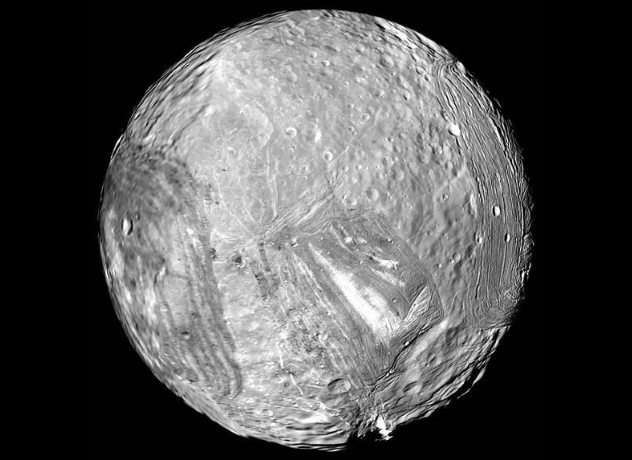
Although Titania is the largest of Uranus’s moons, Miranda, the smallest of the planet’s five large moons, may prove to be a better place to set up a colony. Several of the fault cliffs of Miranda are extremely deep, in some cases nearly 12 times as deep as the Grand Canyon here on Earth. These could offer ideal places to land and set up a “base” that is protected somewhat from the outer elements, which would included charged, radioactive particles produced by Uranus’s magnetosphere. Miranda also has no atmosphere to provide any protection from these particles.
Ice exists on Miranda in abundance; astronomers and researchers estimate it to be half of the moon’s overall composition. Like Europa, there is a possibility that liquid water may exist under this ice, something that is not likely to be known for sure until it is studied at a much closer distance than we’ve currently managed. Liquid water would indicate significant geological activity under the surface, as Miranda is much too far away from the Sun for its heat to keep the water in a liquid state. Although it is only a theory (and not a very probable one at that), it may be that Miranda’s close proximity to Uranus and the consequent tidal forces are enough to trigger this geological activity.
Liquid water or not, if a human colony is ever set up on Miranda, the moon’s very low gravity would mean that any researches who fall from any of the large cliffs and into the deep canyons would take minutes to reach the bottom. The descent would be so much slower than here on Earth that such falls probably wouldn’t be fatal.
7 Enceladus
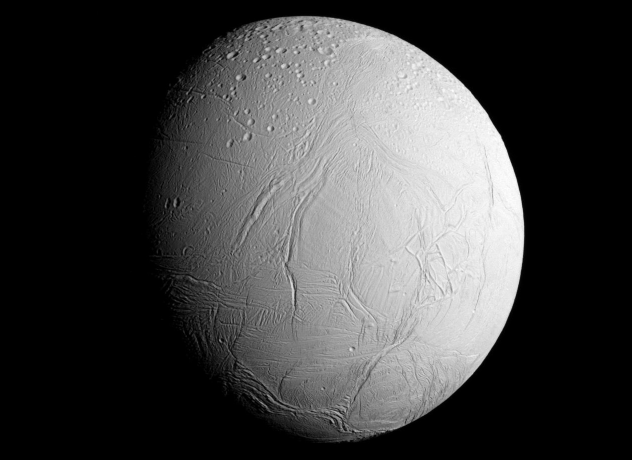
According to some researchers, not only would Enceladus, one of Saturn’s main moons, be a good place to set up a colony and observe the ringed planet, but it might also be the place most likely to already support life.
Enceladus is covered in ice, but it has been observed spewing ice particles high into space from geyser-like jets. Samples have been collected and analyzed by the Cassini spacecraft, which detected liquid water, nitrogen and organic carbon. These elements, as well as the energy source that sent them out into space in the first place, are essentially the “building blocks” of life. The next step now for scientists is to discover if more complex organisms are hidden beneath the icy surface. The results from initial testing of the contents of the plumes have made Enceladus more attractive to scientists.
It is theorized that the best location to set up a base on the ice world would be close to where the plumes originated—huge cracks on the surface of the ice at its south pole. The are known as Enceladus’s “tiger stripes.” The heat produced in this region is roughly equivalent to 20 coal-fired power stations and could be utilized by potential colonists as a heat source.
There would be plenty of craters and ridges to explore and potentially be utilized as bases as well, but the moon’s atmosphere is very thin at best, as is its gravity, which would make moving around quite difficult.
6 Charon
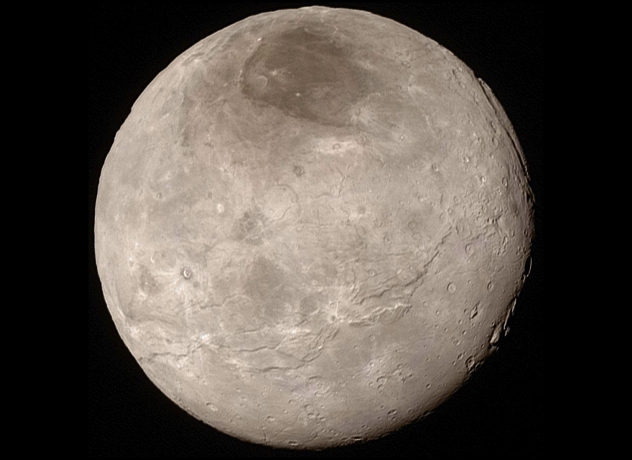
As NASA’s New Horizons space probe made its way to Pluto, it also sent back amazing images of the dwarf planet’s largest moon, Charon. These images sparked a debate among scientists as to whether or not geological activity is present, due to surface of Charon (and Pluto) appearing to be much younger than scientists had predicted.
Although there are cracks on Charon’s surface, it seems to be relatively free of asteroid markings and craters, which according to the New Horizons research team, could suggest that Charon is an active world. The cracks themselves are similar to the lava tubes found on our Moon and would be perfect for setting up a human research base or colony.
It is thought that Charon has a very thin atmosphere, which would be a further indicator of geological activity if it is proven to be coming from within the moon itself.
5 Mimas

Known as the “Death Star” moon, Saturn’s icy, rocky moon Mimas may have an ocean beneath its otherwise unwelcoming surface, which may in fact be suitable for life. Examination of the Cassini footage by scientists revealed that Mimas appeared to rock back and forth as it went around on its orbit. This could suggest activity beneath its surface.
Although scientists were very cautious with their findings, noting that there hadn’t been any other signs of geological activity, they stated if an ocean was discovered, the moon should certainly be considered a possibility for colonization. It’s estimated the possible ocean would be around 24 to 29 kilometers (15–18 mi) beneath the surface.
Should the rocking motion prove not to be the result of liquid water under the surface, then it is most likely to be the result of a misshapen core, possibly due to the immense gravitational pull of Saturn’s rings. As there are no further outward signs of activity under the surface, the only way to find out for sure would be to land on the moon and conduct research on the surface temperature and take measurements of its gravity field.
4 Triton
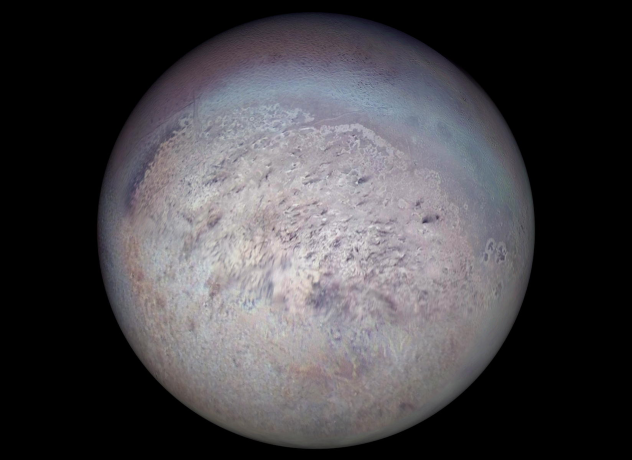
Images and data sent back from the Voyager 2 spacecraft in August 1989 showed that the surface of Neptune’s largest moon, Triton, was made up of rock and nitrogen ice. It also raised the possibility that there was activity under the surface which might suggest the presence of liquid water.
While Triton has an atmosphere, it is so thin that it would be virtually nonexistent to anyone on the surface. Not that you would be able to step outside without some very heavy-duty protective clothing, anyway. Triton has an average temperature of –235 degrees Celsius (–391 °F;), which makes it the coldest body in the known universe.
Triton would be a place of interest for scientists to visit and, technology permitting, set up a permanent base on, and it certainly has enough quirks to warrant close study:
Areas on Triton’s surface appear to reflect light as if they’re made of something hard and smooth like metal. It is widely accepted that these areas are the result of dust, nitrogen gas, and possibly water spewed from within the surface of the moon before then being distributed by the super-thin atmosphere and freezing on the surface to the appearance of smooth ice. It is not known how deadly these releases would be to the environment or to humans.
It also doesn’t appear that Triton formed at the same time and from the same material as its planet, which is relatively strange, given its size. It seems to have formed elsewhere in space, and while roaming the universe, was “captured” by Neptune. The strange moon also orbits its host in the opposite direction to the planet. Triton is the only known moon in the solar system to do this.
3 Ganymede
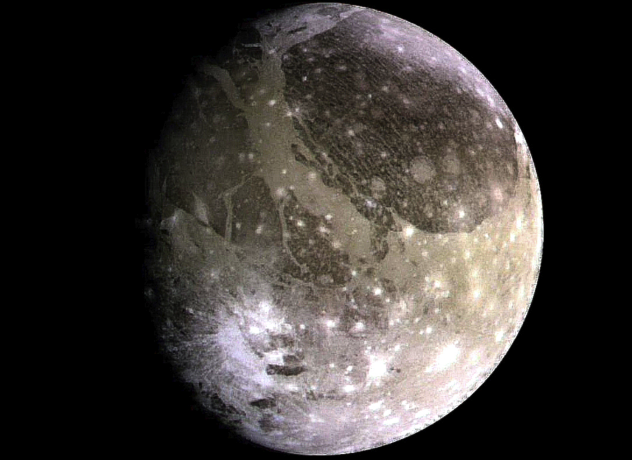
Ganymede is Jupiter’s largest moon, and like other celestial bodies in our solar system, with the improvement of technology improves has come the suspicion that liquid water exists under its surface. Compared to other ice-covered moons, Ganymede’s surface is thought to be relatively thin and therefore should be easier to penetrate.
Ganymede is also the only moon in the solar system to have its own magnetic field. This gives the moon auroras similar to the ones on Earth. The fact that these auroras don’t appear to move in any great way indicates to scientists there is an ocean under the surface. Ganymede also has a thin oxygen atmosphere. Although it seems to be too thin for life as we know it to exist, the potential for some form of terraforming exists.
In 2012, the European Space Agency received the go-ahead to launch a mission to explore Ganymede, along with two other of Jupiter’s moons—Callisto and Europa. The mission is scheduled to launch in 2022 and expected to reach Ganymede a decade later. Although all three moons will be of immense interest to researchers, it is believed that Ganymede may very well contain the richest environment for study and potential settlement.
2 Callisto
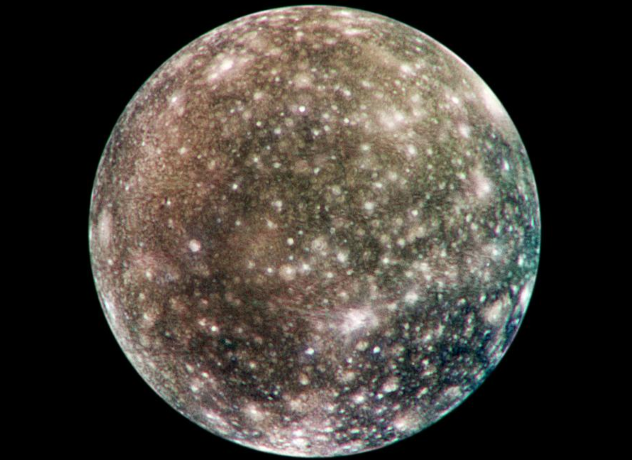
Approximately the same size as the planet Mercury, Jupiter’s second largest moon Callisto is another moon that appears to have a vast liquid ocean under its icy surface and consequently great potential for colonization.
The surface of Callisto consists mainly of craters and what are essentially fields of ice. Callisto also has a thin atmosphere made up of carbon dioxide. Research already undertaken suggests that this atmosphere is being replenished by carbon dioxide released from beneath the surface, as it is too thin to remain in place otherwise. Initial data suggests the possibility that oxygen may also be present in the atmosphere, but further testing would be required to confirm this.
As Callisto is at a safe distance from Jupiter, radiation from the planet would be relatively low, while the lack of geological activity makes the environment more stable for potential human colonists, so much so that habitats could feasibly be built on the surface of the moon as opposed to deep underground.
1 The Moon

Of course, when all is said and done, the first place in space that will be colonized is likely to be our very own Moon (aka Luna). As well as being a good “dress rehearsal” for missions much further afield, establishing a base on the Moon would serve as a great launching point for missions into deeper space.
A story circulated around many media platforms in March 2016 suggested that scientists predict such a base could very well be established within the next decade. Chris McKay, a NASA astrobiologist, is one person who is very much in favor of making the mission a reality. He believes that other missions to the Moon since Apollo 17 have failed due to them simply being too expensive, but his team’s plan will be a fraction of the cost. He states that this is partly due to new technologies which were designed for use on Earth but will also be very cost-effective in space—such as self-driving cars and waste-recycling toilets.
While NASA’s main focus is to land humans on Mars, McKay believes they will not be able to fulfill that dream before they’ve successfully set up a permanent base on the Moon, stating that it would provide a “blueprint” for missions to the red planet. McKay believes that the fact that other agencies as well as private companies are expressing real interest in, and even have plans for, setting up a base on the Moon will be all the motivation that NASA will need to make the plans happen, if only so they can “establish the rule of law” there.
Marcus Lowth—writer at Me Time For The Mind—http://www.metimeforthemind.com/
Me Time For The Mind on Facebook—https://www.facebook.com/MeTimeForTheMind/

